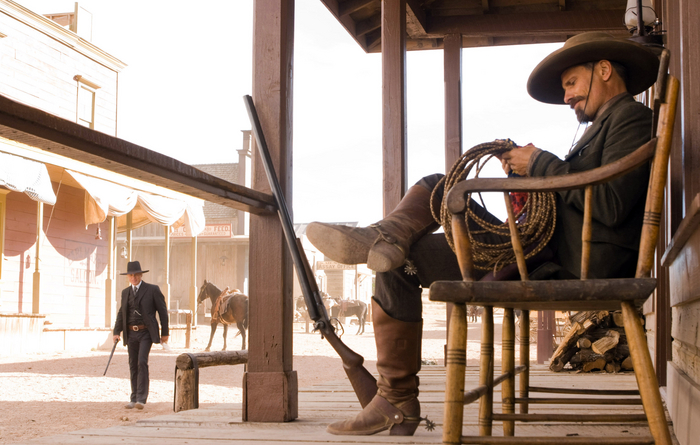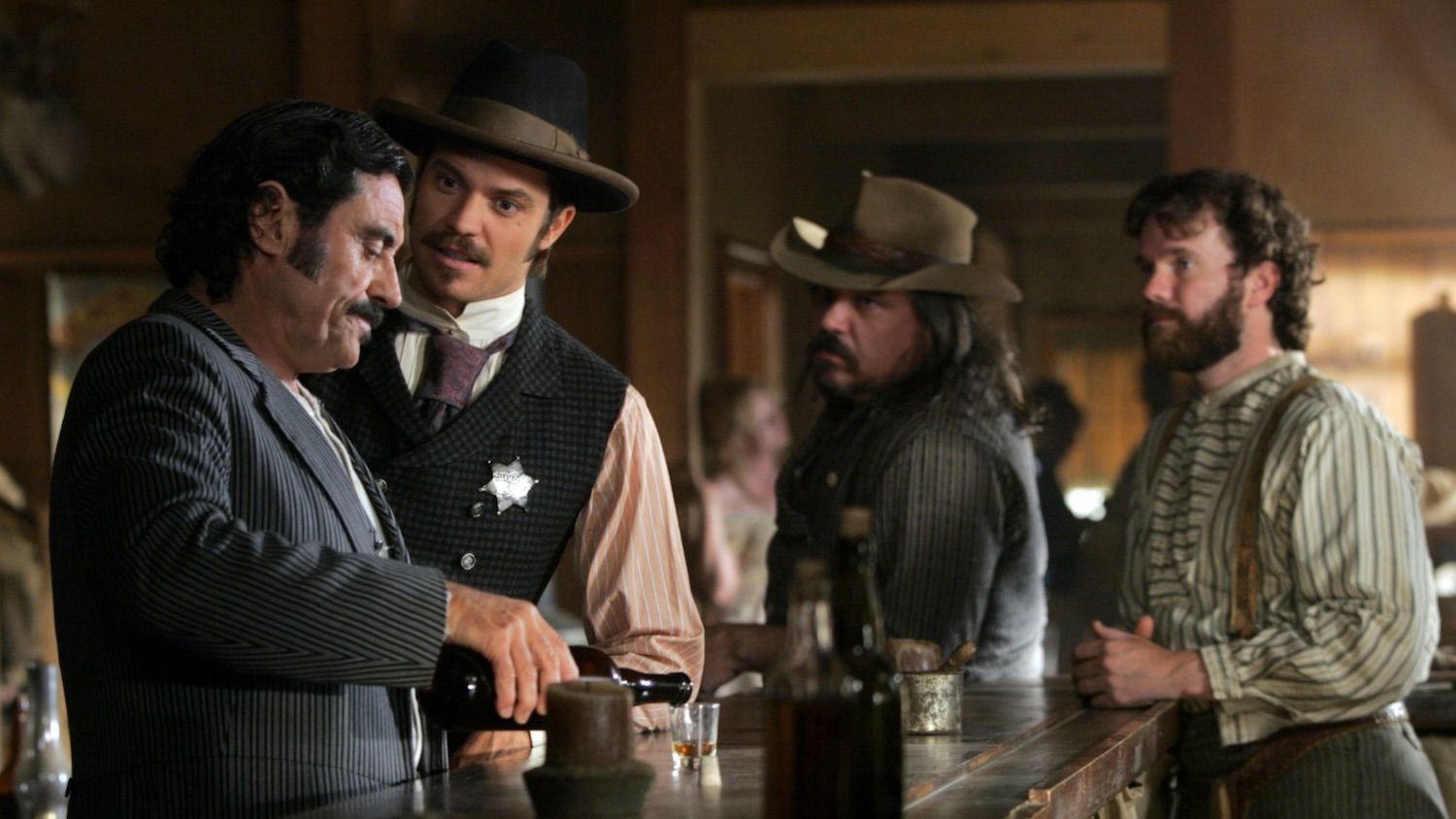
The romance, freedom, danger, and violence of the Old West may always intrigue us. It’s much the same as how stories of chivalrous knights and war heroes throughout history captivate our imaginations—especially through fiction’s idealized lens.
There was a time when America was absolutely obsessed with the Wild West as presented in movies and TV shows of the 1950s. The clothes were clean, the colors were bright (once color TVs came along), the stakes were clear, the violence was tasteful, and the gunshot wounds never bled. Most importantly, the good guy always won.
It seems the country’s desire for films and shows based in a world of majestic vistas with lean silhouettes on horseback sporting six shooters waxes and wanes over time.
The Western genre has been around since the beginning of motion pictures. It had its heyday in the ’50s and enjoyed an extended life through the ‘60s. The less cheesy and more violent Spaghetti Westerns featured darker, more complicated antiheroes instead of the classic white- and black-hatted good and bad guys. Even John Wayne began starring in movies more in line with what Clint Eastwood was doing, such as the 1969 “True Grit.”
In the 1970s, the allure of Westerns waned. There were a few good ones here and there, but the genre was pretty much dead by the ’80s. The only notable releases from that decade are the two “Young Guns” (1988 and 1990) movies, which were mostly vehicles for their young, star-studded casts, and Eastwood’s “Pale Rider” (1985).

Dawn of a New Era
With a new decade came a renewed interest in the genre, heralding what I consider the “New Age of Westerns.” Motion pictures looked better than ever with advances in makeup, special effects, and stunt work. Pretty much anything could be authentically depicted on screen with a big enough budget.
Hollywood was ready to gamble, and the big-budget epic “Dances with Wolves” (1990) was completed with Kevin Costner in both the starring role and in the director’s chair. This movie marked the first time I saw the dirt and difficulty of late-1800s life depicted in such a realistic way. It was also the first time I disliked the U.S. Calvary.
“Dances with Wolves” brought home a ton of awards, including Oscars for Best Picture, Best Director, Best Screenplay, Best Cinematography, Best Sound, Best Editing, and Best Original Score. It was also nominated for five additional Oscars, including a Best Actor nod for Costner.
The same year, to far less fanfare, “Quigley Down Under” was released starring Tom Selleck. Since it takes place in Australia, I guess this is technically a “Down Under” rather than a Western, but it sure feels like a Western. With Quigley’s cowboy demeanor and sharpshooting skills, it eventually became a cult classic.
Soon after “Dances with Wolves” came what is not only Clint Eastwood’s best Western, but also arguably the best Western of all time. “Unforgiven” was released in 1992 with the lead actor again occupying the director’s chair, though by then directing was old hat for Eastwood. He knew just how he wanted to make his final Western after starring in so many and being away from the genre for a number of years.
This film is a milestone in the lineage of the Western genre. Nothing about it is cut and dried. The antagonist is the heavy-handed, law-and-order sheriff Little Bill Daggett (Gene Hackman), while the protagonists are murderers and what Daggett would call bad men.
By the end, you discover you’re passionately rooting for an antihero, William Munny (Eastwood), who you watched take part in the contract murder of two men, and who killed scores more in his past. You’re basically cheering when he guns down several deputies and Daggett in a saloon, after blasting an unarmed bartender with a 10-gauge shotgun. He rides out of town in rainy darkness, watched with trepidation and fear by the few townspeople who don’t dare raise their heads. It’s the polar opposite of Gary Cooper riding off into a sunset.
The violence is messy and less stylized than anything before it. Much like in real life, a high-noon showdown is pretty much unimaginable in the world of “Unforgiven.” It went on to Academy Award success, garnering four statues, including Best Picture, Best Supporting Actor (Hackman), Best Director (Eastwood), and Best Editing (Joel Cox). It also received five nominations, including a Best Actor mention for Eastwood.
These films proved there was a critical and commercial appetite for Westerns—as well as movies with three-hour runtimes. Then, Hollywood did what it does best and pulled away from cool original stories, again committing the story of Old West legend Wyatt Earp to film—twice.

The New Age Rolls On
In 1993, “Tombstone” hit theaters and it was, in a way, a return to the Westerns of old. Instead of a brooding, gritty movie like “Unforgiven” or a sweeping epic like “Dances with Wolves,” “Tombstone” is an action movie with an astonishing cast. It’s fun, pretty over-the-top and stylized—and people love it.
“Tombstone” was a huge hit, and it completely overshadowed Costner’s “Wyatt Earp,” which was released just a few months later in 1994. “Wyatt Earp” tries to combine a greater degree of realism and adherence to historical fact with the scale of a sweeping epic, recounting Earp’s life story rather than just the events that occurred in Tombstone and immediately after. It succeeds, mostly.
It’s simply not a very fun movie. Costner’s Earp, while likely much closer to the real Wyatt Earp than Kurt Russel’s portrayal in “Tombstone,” is a dour, serious man who is pretty tough to like for the almost four hours you spend with him. Audiences may have responded differently if the two films hadn’t been released so closely, but that’s not certain.
The new age of Westerns continued through the ’90s with pretty lousy movies like “The Quick and the Dead” (1995), a few solid and inventive entries like “Legends of the Fall” (1994), “Far and Away” (1992), and also a comedy with “City Slickers” (1991).
“Wild Bill” (1995), a biopic of Wild Bill Hickock starring Jeff Bridges, was a valiant attempt that just didn’t gel and consequently tanked. A big-budget-flop adaptation of the TV show “The Wild Wild West” was filmed with Will Smith in 1999, following a slightly more successful 1994 adaptation of the old show “Maverick” starring Mel Gibson and the show’s original star, James Garner. “Ride With The Devil” (1999) was an excellent Civil War-era Western starring Tobey McGuire, among others, that doesn’t get nearly enough credit.
In the new millennium, good Westerns seem to come not in waves but as isolated high- and low-budget films, the majority of which are pretty solid. We got a good remake of “3:10 To Yuma” (2007), “The Assassination of Jesse James by the Coward Robert Ford” (2007), the criminally underrated “Appaloosa” (2008), “The Proposition” (2005), “Seraphim Falls” (2006), and the Coen Brother’s excellent and award-winning remake of “True Grit” (2010).

The New Age of TV Westerns
Over on the small screen, HBO did something completely new, marking a second chapter in the new age of Westerns. The show “Deadwood” is perhaps the best look into something akin to everyday life in the Old West. Beginning in 2004 and running for three seasons, the show was finally concluded with a full-length movie in 2019. The series is set a few months after the real-life camp of Deadwood, South Dakota quickly sprang up when gold was discovered in the Black Hills.
As far as daily life, “Deadwood” shows it all: the mud, the blood, the horrifying lack of medical treatment and basic sanitation. It demonstrated the shocking speed with which a boom town can come into being from nothing, with the curse of society and civilization soon to follow. The dialog in the show is unlike anything before or since, blending an intricate web of antiquated words, phrases, and syntax with an often hilarious stream of creative cussing that rivals the average Martin Scorsese movie.
“Deadwood” also does something quite special. It manages to depict its characters and circumstances with a realism and laid-bare detail while also showing that, despite the rough world the characters inhabit, things like virtue, honor, and righteousness do mean something and have power—as do corruption, scheming, and politics.
The violence is sparse but explosive and surprising when it occurs. Flashy gunslingers seem foolish, while the truly deadly men possess an unquestionable menace.
While “Unforgiven” provides a somewhat hopeless, or at least very bleak and isolated view of this era in history, “Deadwood” gives the viewer a rich world inhabited by real people, not archetypes, though it does play fast and loose with the history of Deadwood and its inhabitants.
HBO canceled the show due to the high cost of production, but the 2019 film, set 10 years after the events in the show, did provide a satisfying end to the beloved series. After that, I don’t really see a reason to make any more Westerns, but I’m sure something like the outstanding remake of “True Grit” will surprise us all somewhere down the trail.






